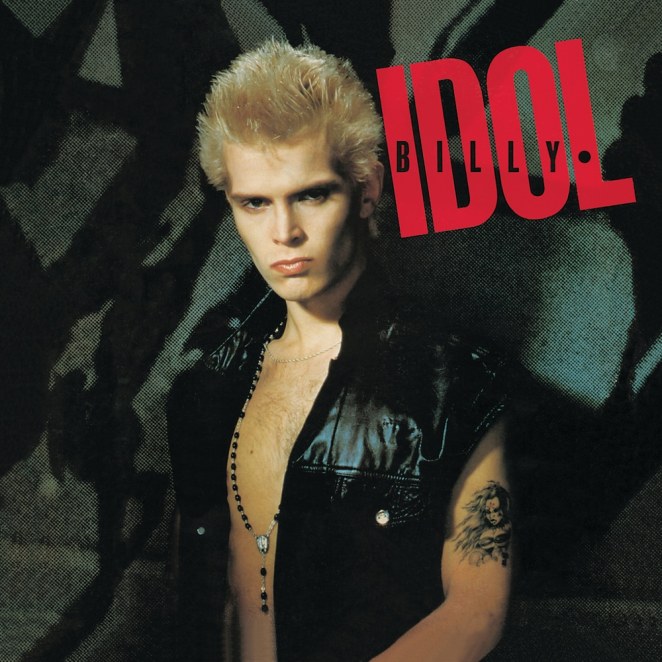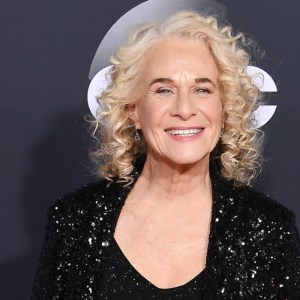Just a year after breaking from his punk band Generation X, Billy Idol was working on his first solo album and wrote a song about unrequited love that turns into a wedding from hell.
Videos by American Songwriter
Produced by Keith Forsey, who also co-wrote “Flashdance… What a Feeling” with composer Giorgio Moroder and singer Irene Cara, Billy Idol was the punk rocker’s first release as a solo artist, and “White Wedding” was his second charting hit following the 1981 single “Dancing with Myself”—a song he originally wrote and released with Gen X in 1980 and later included on the 1983 reissue of his debut. On the charts, “White Wedding” reached No. 10 on the Billboard Bubbling Under the Hot 100 and No. 36 on the Billboard Hot 100.
To date, “White Wedding” remains one of Idol’s most recognizable hits, but the song was never as pristine as the title may have hinted. In the song, Idol is singing about his girlfriend who wants to marry someone else.

It’s not entirely about Billy Idol’s real sister.
Though Idol is singing hey little sister, what have you done, the song isn’t entirely about his actual sister Jane Broad. At the time of writing the song, his sister was getting married and pregnant, which helped inspire the song, but it wasn’t all about her—“sister” is more of a slang in England for girlfriend, similar to “Bae.” The song also addressed his rock star life and leaving part of his former life behind.
“A lot of people ask did you really write this about your sister,” said Idol in 2002. “I’ve got to say it’s not really completely true. I think everybody when you’re writing a song, you’re always looking for new situations, new circumstances, something that does come from your own life, but it’s never complete. My sister was pregnant. She was getting married and there was no argument or anything, but I thought about all the different people and all the times past when that was such a taboo thing. I thought about that, the taboo nature and the convention and the wedding being such a celebration but then it turns into something like a shotgun wedding. Then it went on from there,”
Idol added, “Then I thought about this incestuous kind of sick brother… who’s galavanting across the globe on some wild, who knows what he’s looking for, leading a completely unconventional life, leaving behind all your friends and just going and going and all those things started to play into the song.”
The part of the song of the most importance to Idol, is in the middle. “I supposed leaving home, and leaving England and suddenly faced with a new life again it did make me think there’s nothing fair in this world,” said Idol. “There’s nothing safe in this world. There’s nothing pure in this world.”
Hey little sister, what have you done
Hey little sister, who’s the only one
Hey little sister, who’s your superman
Hey little sister, who’s the one you want
Hey little sister, shotgun
Hey little sister, who is it you’re with
Hey little sister, what’s your vice and wish
Hey little sister, shotgun (oh yeah)
Hey little sister, who’s your superman
Hey little sister, shotgun
No Guns
In one of the verses, Idols says Hey little sister, shotgun, but the line has nothing to do with guns. Idol alludes to the female subject’s shotgun wedding and that she may become pregnant and wanted to get married to her other beau.
A Not-So-White Wedding
Generally, a white wedding is one in which the bride is still a virgin. In this case, Idol is being sarcastic since his girlfriend was far from innocent, and he’s still angry after being dumped.
It’s a nice day to start again
It’s a nice day for a white wedding
It’s a nice day to start again
Steve Stevens’ Riff
The song starts with a unique guitar riff created by Idol’s longtime guitarist and collaborator Steve Stevens. Both wanted something distinct to open the song, and Stevens had no trouble finding it. (Learn how to play the riff from Stevens here.)
More Goth than “White”
In the video, directed by David Mallet—who also worked on David Bowie’s “Ashes to Ashes” and “Let’s Dance” and Queen’s “I’ve Got to Break Free” and Radio Ga Ga” videos—the visuals were more goth, even nightmarish, than pure and “white” with leather and chains, a motorcycle crashing through a stained glass church window and that bloodied barbed wire ring. The mock wedding in the video has Idol jumping in to marry Perri Lister, who was his actual girlfriend at the time and also performs as one of the three dancers clad in black patent leather. “In those days, he was the greatest looker and mover since Elvis,” said Mallet in the 2011 book “I Want My MTV,” written by Rob Tannebaum. “Before ‘White Wedding,’ nobody would have admitted that was even possible. One look at that video and they got him.”
It’s not very pro-marriage.
Though the song has been used in actual weddings, lyrically it’s not very pro-marriage. Instead, the song found better placement on the big screen throughout the decades. In 1993, it was featured in the romantic crime drama True Romance (tattoo scene with Alabama), Adam Sandler’s 1998 film The Wedding Singer, where Idol also makes a cameo appearance and later helps reunite Sandler’s character with Drew Barrymore. Another rendition of the song by George Kostoglou was featured in the 2016 film My Big Fat Greek Wedding 2. There are also covers of “White Wedding” by Queens of the Stone Age, Rowland S. Howard, Janet Devlin, and more floating around.

